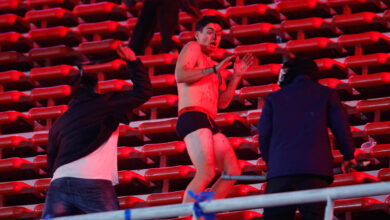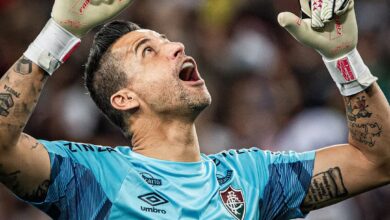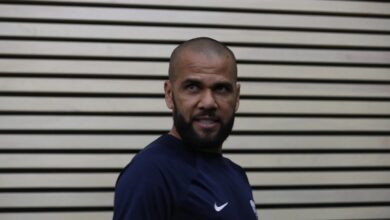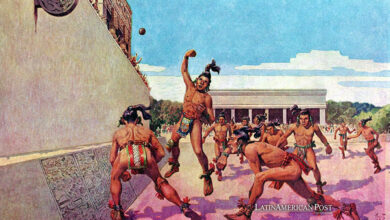Between Messi and Vinicius Jr: Latin America’s Lost Soccer Generation
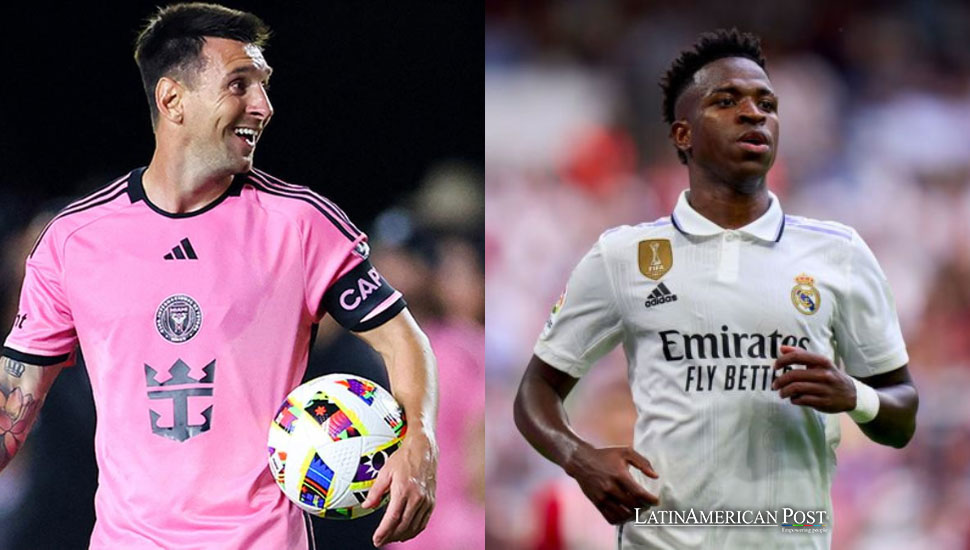
With Lionel Messi’s era ending, Vinicius Jr leads a new generation of Latin American soccer players. However, what happened to the talented players born in the mid-1990s? This article looks into the overlooked generation, the talents that came close to superstardom, and the youngest prospects ready to shape the future of Latin American soccer.
The Lost Generation
During Lionel Messi’s reign, which spanned almost two decades, many talented Latin American players were overshadowed by his brilliance. For those born in the mid-1990s, their prime years coincided with Messi’s peak, which made it hard for them to establish their own identities on the global stage. Though these players were highly skilled, Messi’s dominance left little room for their rise.
One of the most prominent examples is Argentine forward Paulo Dybala, born in 1993. Touted as Messi’s successor, Dybala showed glimpses of brilliance at Juventus with his dribbling and playmaking abilities. However, injuries and inconsistent performances hampered his rise. Playing alongside Messi in Argentina’s national team didn’t help his case, as he was relegated to a supporting role.
Similarly, Chile’s golden generation, led by stars like Alexis Sánchez and Arturo Vidal (both born in the late 1980s), struggled to transition into the next era. Players like Eduardo Vargas and Charles Aránguiz, born in the mid-1990s, were expected to continue Chile’s momentum after their consecutive Copa América titles in 2015 and 2016. However, the Chilean national team failed to qualify for the 2018 World Cup, a signal that the new generation could not uphold the previous success.
In Mexico, Hirving Lozano, born in 1995, showed great promise during his time with PSV Eindhoven and Napoli. His standout goal against Germany in the 2018 World Cup put him on the world’s radar, but injuries and inconsistent form kept him from becoming the face of Mexican soccer. Another Mexican player, Raúl Jiménez, born in 1991, had a promising career with Wolverhampton Wanderers before a severe head injury in 2020 derailed his trajectory.
Perhaps one of the most striking cases is James Rodríguez, born in 1991 in Colombia. James burst onto the global scene with a phenomenal performance in the 2014 World Cup, winning the Golden Boot as the top scorer. His volley against Uruguay remains one of the tournament’s most iconic moments. Following the World Cup, he moved to Real Madrid, where he initially thrived. However, injuries, tactical changes, and coaching preferences led to James gradually fading from the spotlight. While he is still revered in Colombia, his career never quite lived up to the potential displayed in 2014.
This generation had the talent to succeed, but many factors, including Messi’s enduring dominance, injuries, and team dynamics, hindered their rise to sustained superstardom. Despite their promising starts, they became part of the lost generation.
The Late 1990s and Early 2000s Prospects
While the mid-1990s generation struggled to live up to expectations, a group of players born in the late 1990s and early 2000s is now making its mark on the world stage. Though still in their formative years, these players have shown a potential to rise to global prominence.
One of the standout names is Luis Díaz, born in 1997 in Colombia. Díaz has already emerged as one of the most exciting wingers in Europe, earning a move to Liverpool in 2022. Known for his explosive pace and ability to score from wide positions, Díaz is seen as the future leader of Colombian soccer. He is expected to fill the void left by stars like James Rodríguez and Radamel Falcao.
In Uruguay, Darwin Núñez, born in 1999, has established himself as one of the most promising forwards in Europe. After an impressive spell at Benfica, Núñez moved to Liverpool, where his aggressive style of play and finishing ability made him a key figure in the team. He represents Uruguay’s next generation, poised to succeed stars like Luis Suárez and Edinson Cavani.
Mexico is also witnessing the rise of players like Diego Lainez and Santiago Muñoz, both born in the late 1990s. Lainez, known for his technical skills, has had stints in Europe, while Muñoz, although young, is considered a promising talent. Alongside Hirving Lozano, these players form the backbone of Mexico’s hopes for success.
Rodrygo and Gabriel Martinelli, both from Brazil and born in the early 2000s, are regarded as key figures in the future of Brazilian soccer. Rodrygo, a versatile forward, plays for Real Madrid and has already showcased his ability to perform in crucial moments, including in the UEFA Champions League. Meanwhile, Martinelli, who plays for Arsenal, is known for his technical skills and ability to play both as a winger and forward. Together with Vinicius Jr, they form a formidable attacking force for Brazil, promising continued dominance for the Seleção.
Julián Álvarez, born in 2000, has shown remarkable potential in Argentina. After starring for River Plate, Álvarez moved to Manchester City, where his versatility as a forward has earned him a growing reputation. He is expected to be a key player for Argentina in the years to come, providing a new attacking option for the national team as Messi’s era comes to a close.
This generation of players, born in the late 1990s and early 2000s, stands at the crossroads of global prominence. While their careers are still developing, their performances on the field show they are ready to take on the mantle of Latin American soccer. The world will be watching closely to see if they can fulfill the promise of their talents.
The Prospects Shaping the Future
As the spotlight moves away from the Messi era and the new wave of talent establishes itself, the next generation of Latin American soccer stars is already making waves. These players show incredible potential even at a young age.
Kendry Páez was born in 2007 and is now 17 years old. Already signed by Chelsea, Páez remains one of Ecuador’s brightest young talents. He made his senior debut for Ecuador at just 16 years old and has since solidified his place as a critical figure in the national team’s World Cup qualifying campaign for 2026. Páez’s impressive performances at the U-20 World Cup, where he became the youngest player to score in the tournament’s history, have only added to the excitement surrounding his future. His creativity, agility, and vision make him a standout attacking midfielder (AM), and despite his young age, his soccer IQ is beyond his years. He remains a player to watch as he continues to develop and is set to join Chelsea after his 18th birthday, where he will begin his European club career.
Fabricio Díaz, born in 2003, is now 21 years old and continues to rise as a prominent figure in Uruguayan soccer. After captaining Uruguay to victory in the U-20 World Cup, Díaz moved to Qatar Stars League club Al-Gharafa, where his performances have kept him on the radar of top European clubs, including Barcelona. Known for his composure on the ball, his leadership skills, and ability to dictate the tempo of a game, Díaz has played a pivotal role for both club and country. He remains a strong candidate for Uruguay’s senior national team as they navigate the World Cup qualifying stages for 2026. His passing range and ability to control the game from a deep-lying midfield position have drawn comparisons to legendary players like Sergio Busquets.
Óscar Cortés, born in 2004, is now 20 years old and continues to shine for Colombia and his club. After finishing as Colombia’s top scorer in the U-20 World Cup, Cortés has attracted significant attention from European clubs. His electric pace and dribbling ability make him a dangerous winger or attacking midfielder, though his finishing and decision-making in the final third still have room for improvement. Despite being raw in some areas of his game, Cortés’s potential is undeniable. He is expected to play a crucial role in Colombia’s World Cup qualifying campaign, and it’s only a matter of time before a European club secures his signature.
Luciano Rodríguez, born in 2004, is now 20 years old and remains one of Uruguay’s most promising young forwards. After scoring the winning goal in the U-20 World Cup final, Rodríguez’s tenacity, strength, and versatility across the forward line have made him a key player for his club, Liverpool FC Montevideo, and a rising star in Uruguay’s national team setup. Known for his relentless pressing and ability to score with both feet, Rodríguez is a player Uruguay will likely rely on as they continue their World Cup qualifying campaign. His all-around ability as a forward has attracted interest from bigger clubs, and it seems likely that a move to Europe is on the horizon.
Óscar Zambrano, a 19-year-old midfielder from Ecuador, is another exciting talent. Playing for LDU Quito, Zambrano is a tough tackler with excellent passing range and technical skills. His ability to anticipate passes and break up play makes him a key player for Ecuador’s future midfield. As Ecuador fights for qualification in the 2026 World Cup, Zambrano’s role will be crucial in solidifying their midfield strength.
Other exciting young prospects include Kevin Mantilla from Colombia, a commanding center-back with a high aerial duel success rate, and Darío Osorio from Chile, a dynamic winger with a knack for beating defenders and cutting inside to create chances.
As the youngest prospects, such as Kendry Páez, Fabricio Díaz, and Óscar Cortés, continue to develop, it’s clear that the pipeline of talent from Latin America remains as strong as ever. These young stars are already proving their potential and will likely shape the future of global soccer.
Also read: How Soccer’s Hispanic Influence Is Transforming U.S. Sports Culture
The transition from the Messi era to the next generation has been without challenges. Still, it offers a new wave of hope and excitement for Latin American soccer fans. While marked by missed opportunities and unfulfilled potential, the lost generation serves as a lesson and a reminder of the sport’s unpredictable nature. Meanwhile, the current and upcoming generations offer a fresh start filled with immense promise and the possibility of greatness.

